Photos by Scott Buschman
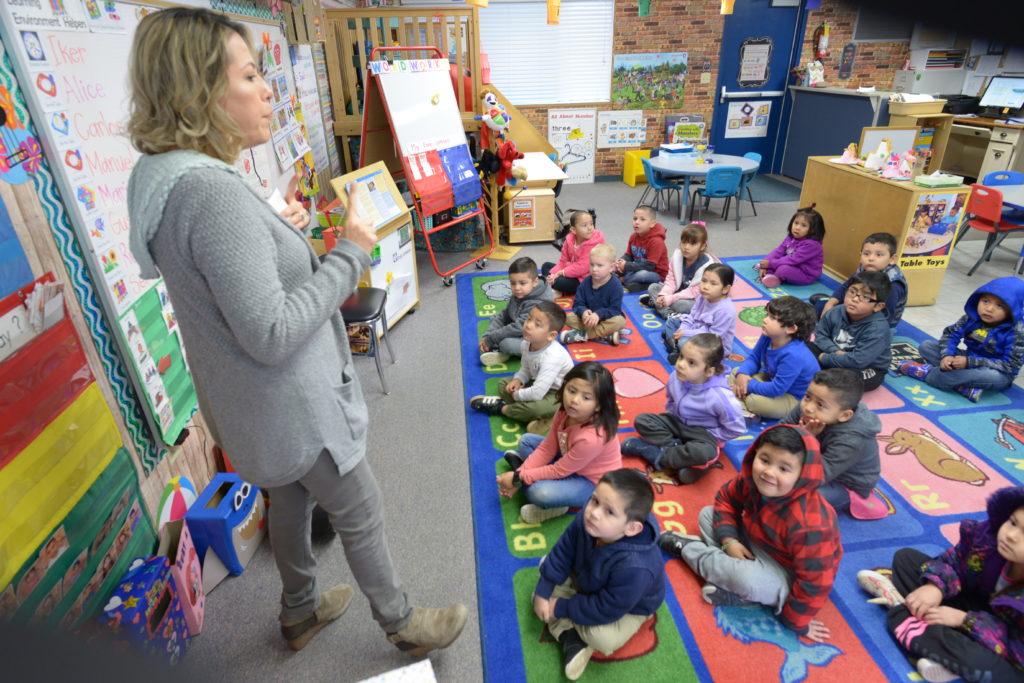
“We are the dinosaurs, marching, marching. We are the dinosaurs. Whaddya think of that?”
The sound of 24 young learners singing in unison fills preschool learning facilitator Liliana Mendoza’s classroom at Washington Preschool in the small Central Valley farming community of Lindsay. The room is bright, colorful, and filled with toys and puzzles and adventure. The students settle in for morning circle time, eager to start their day of fun and learning.
While this is a typical scene in just about any early childhood educational environment, the preschool program at Lindsay Unified School District is anything but run-of-the-mill. The rural school district offers free preschool at five locations to all students in the district, an endeavor LUSD began fully funding in 2017 after data showed a major difference between incoming kindergartners who had attended preschool and those who hadn’t. While the state doesn’t collect specific information, Lindsay’s program is a rarity if not completely unique — it may currently be the only school district in California to provide preschool to all students without conditions.
“This is not child care. We maximize every possible instructional moment. Every opportunity is a learning experience.”
Cheri Doria,
Lindsay Unified Director of Preschools
That’s about to change. With Gov. Gavin Newsom’s embrace of early childhood education and his proposal to invest nearly $2 billion into resources for California’s youngest learners, classrooms full of excited students across the state will soon mirror the preschool program in Lindsay, which is a thriving example of what the new focus on early learning opportunities in school districts statewide can achieve.
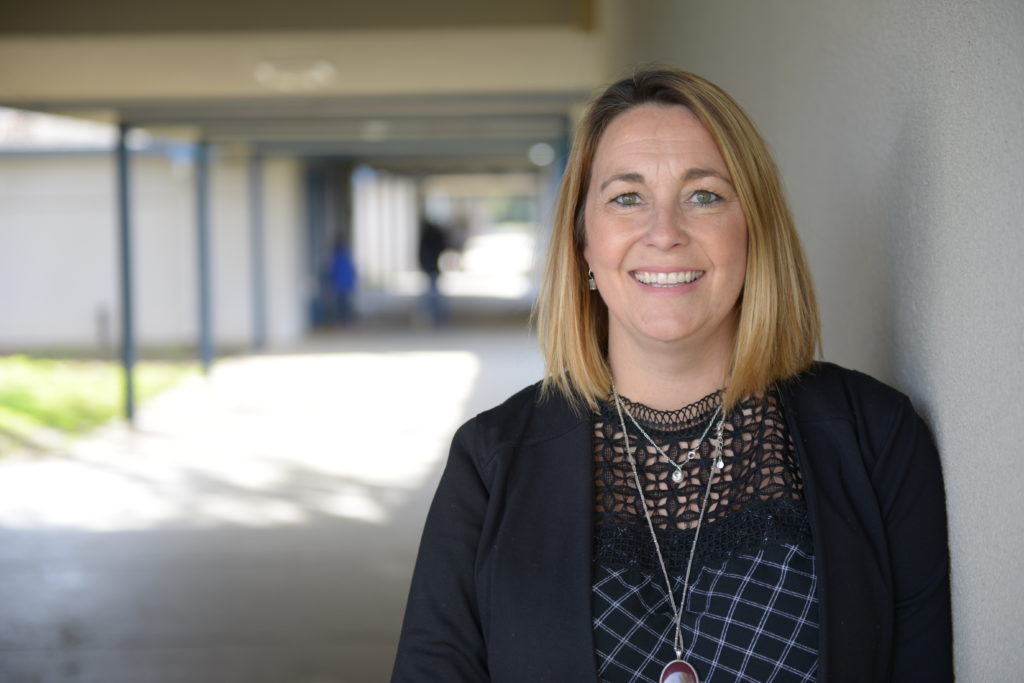
“This is not child care. We maximize every possible instructional moment,” says Cheri Doria, director of preschools at LUSD. “Every opportunity is a learning experience. It impacts our learners so much in their future.”
While the national focus on preschool and its numerous benefits has taken center stage more recently, Lindsay has long sought to provide all its pre-K children with early education opportunities. Starting in 2003, LUSD began offering preschool to all learners, cobbling together funding from a variety of state, county and local sources. When the county funding dried up in 2010, Lindsay could only provide preschool to its most vulnerable students. Doria says there was a desire to reinstate the universal program, but it wasn’t until 2016 when a kindergarten educator started tracking data on her kindergarten students that the district truly realized the importance of their preschool program.
An educator’s research spurs change
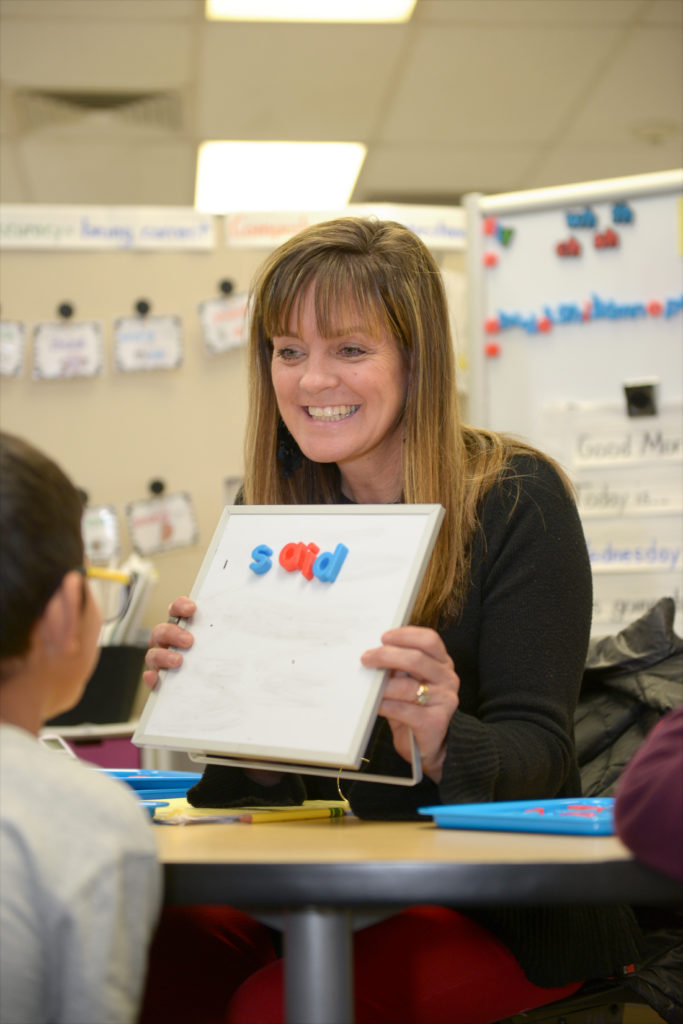
“Say it like we’re pirates: Arrrr!” instructs kindergarten teacher turned elementary reading specialist Kristy Caesar, as her students finish a session and prepare to return to class. “Thank you for growing your brain with me today!”
As the third-graders leave, Caesar says she can tell almost immediately whether her learners attended preschool. It’s a skill she honed three years ago when her new kindergarten class was far behind grade level and lacking in social-emotional skills. Shockingly, more than three-quarters of the new students couldn’t identify a single phonetic letter sound. Upon further investigation, Caesar found that only four of her 24 students had attended preschool, prompting her to study whether there was a correlation between attending preschool and academic achievement.
“I tracked their data all year long: Letter names, sight words, phonemic awareness and reading assessment,” says Caesar, a member of the Lindsay Teachers Association (LTA). “The kids who went to preschool were far better and at grade level by the end of the year. I felt so bad for those kids who didn’t have preschool. They had so much catching up to do. It just wasn’t fair.”
Impacts from the lack of preschool experience weren’t limited to reading. Caesar discovered that she had to teach her non-preschool students how to be at school, how to interact with classmates, even how to share. She took her data to LUSD administrators, who found Caesar’s research to be so compelling that the district launched its own study, reaching the same conclusion.
“I felt so bad for those kids who didn’t have preschool. They had so much catching up to do. It just wasn’t fair.”
Kristy Caesar, Lindsay Teachers Association
“It was really glaring for us,” says Doria, who was a classroom teacher for 10 years prior to taking the helm of the preschool program a decade ago. “Nobody had broken down the data like that before.”
Changing futures through early investment
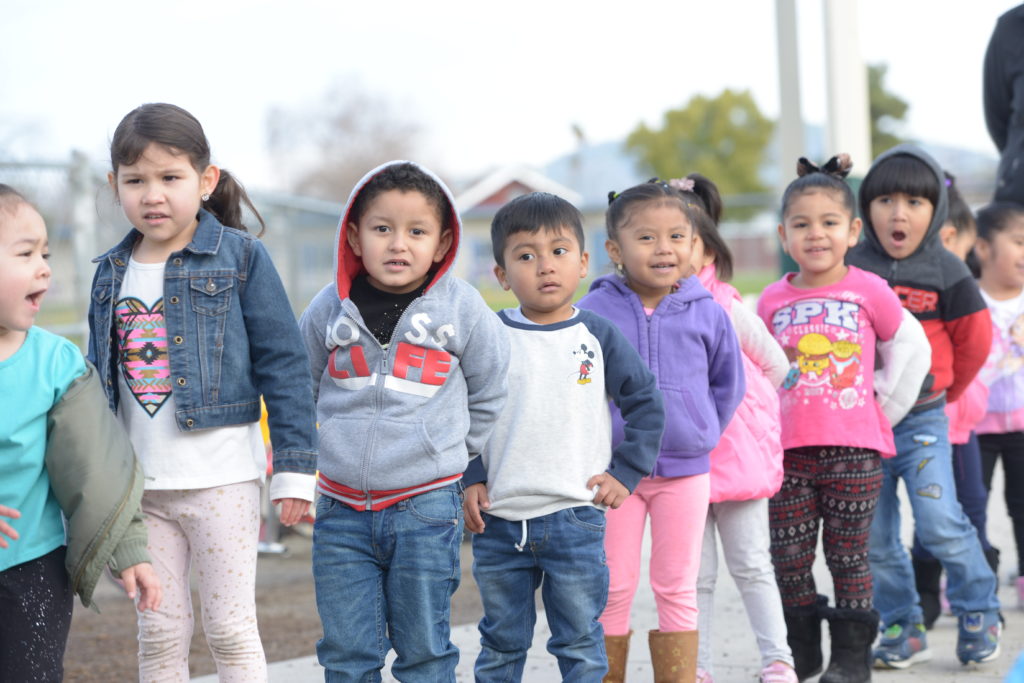
A wealth of recent research has shown that children who go to preschool are far better prepared to enter kindergarten than those who don’t, and those who are economically disadvantaged benefit even more. Kids who are dual-language learners also benefit from pre-K education at a disproportionate rate, in English proficiency as well as other academic skills. And the benefits don’t stop there, according to Deborah Stipek, a Stanford University professor who focuses on early childhood education.
“There is substantial evidence now that high-quality preschool has short-term effects on the likelihood of children being placed in special education or required to repeat a year of schooling, as well as long-term effects on the likelihood of being incarcerated and educational and financial attainment,” Stipek says. “The early years set the foundation for future learning and development.”
Stipek also notes that preschool helps close the “huge achievement gap associated with family income when children enter kindergarten, which remains throughout K-12.” Expanding early childhood education is one of the centerpieces of Gov. Newsom’s “California for All” budget proposal. The massive investment in early resources and opportunity for all children is a major effort to increase educational equity in public schools.
This is particularly critical in districts such as Lindsay, where the vast majority of its 4,000 students are low-income and almost half are English learners.
Teaching children how to learn
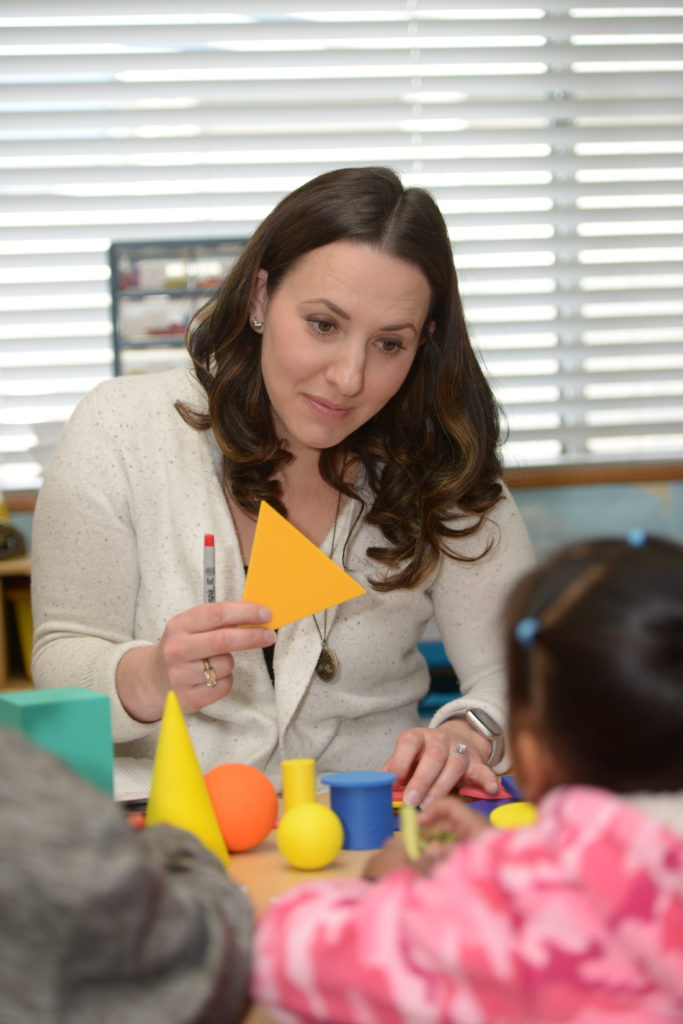
Darcee Collier sits at a table with four of her students, who are working with brightly colored two- and three-dimensional shapes. Collier asks the learners different questions about the shapes, such as which ones roll and which of them will stack.
“This one,” says kindergartner Monique, picking up a yellow cone, “because it has a base.”
Collier, an LTA member, is in her sixth year teaching transitional kindergarten and kindergarten, and has spent 12 years at LUSD. She was drawn to this age of students because of their excitement and eagerness to learn new things, which has only increased since the universal preschool program launched. Collier says new students now enter her classroom ready to learn with established expectations about school, letting her focus time and effort on academic achievement.
“The Lindsay program is successful in showing our learners how important their education is from day one,” she says. “We are able to build upon the foundation that our preschool program started.”
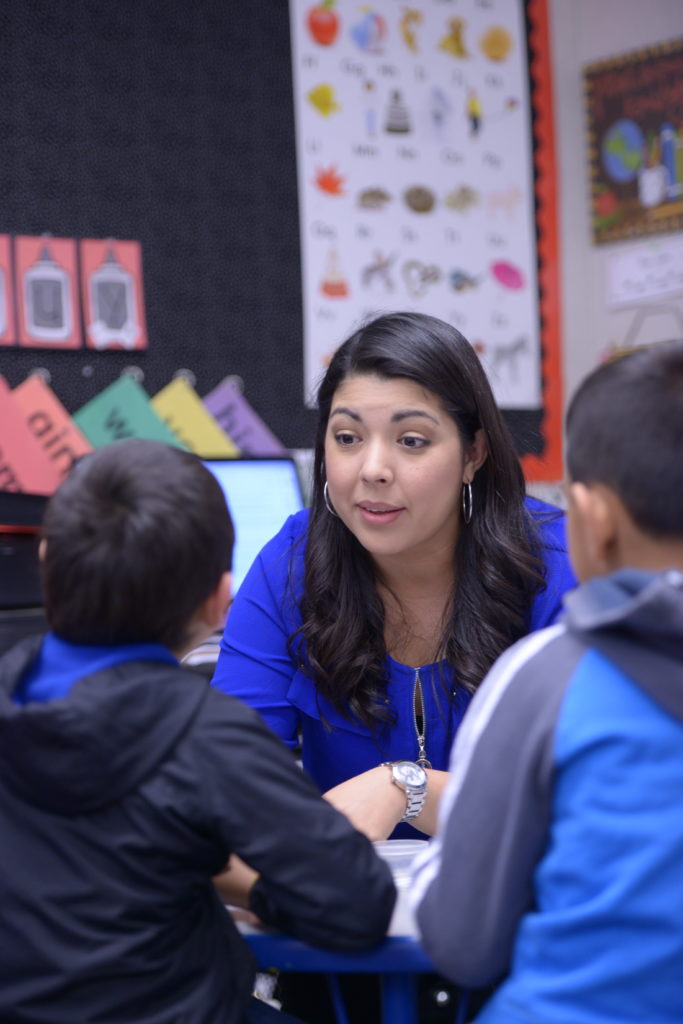
Casandra Luna, an eight-year kindergarten teacher and LTA member, says learners who attend preschool arrive familiar with the routines of a classroom setting and having a firm grasp of early skills that help them hit the ground running in kindergarten. Students without that experience start their schooling already behind their peers.
“They need to learn how to learn,” says Luna. “They need to know how to listen actively during lessons, how to participate, how to interact with others, and how to socialize in a school setting. Learners who have never been in a school setting often struggle the first few weeks of school.”
Additionally, Luna says, the district begins assessing students and collecting data about them from the moment they start preschool, sharing this critical information when students arrive in her class. This is a benefit touted in discussions about the state universal preschool program because it will allow schools to provide resources and support to students immediately upon their arrival in the K-12 system.
“The preschool sends learners’ assessments from the end of the year, so I have an idea of what their needs are right away, which is essential in a performance-based system,” Luna says.
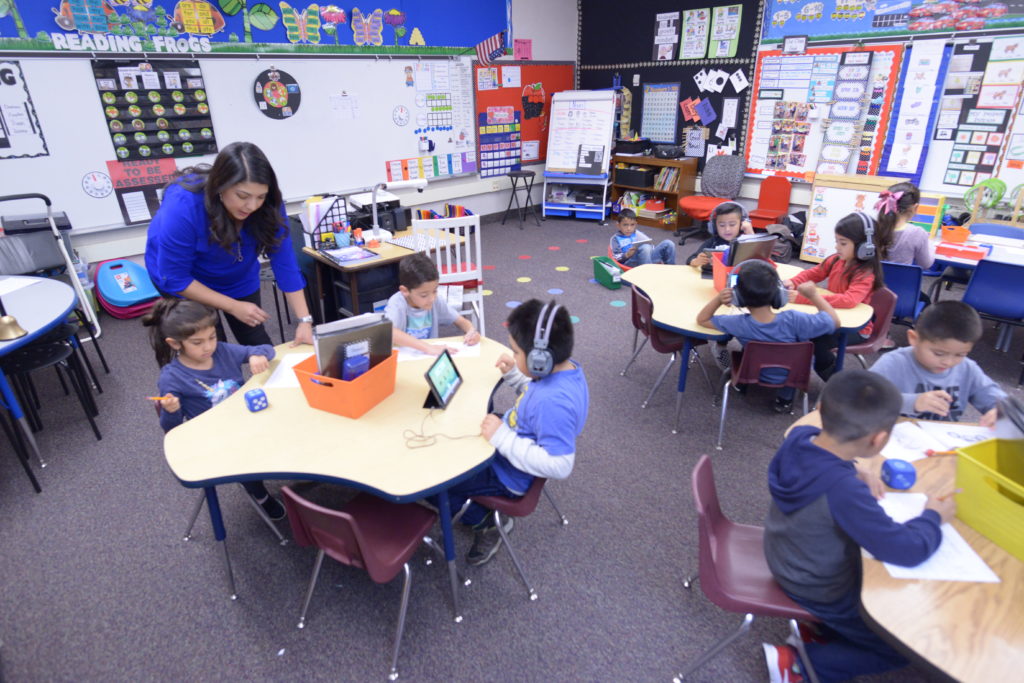
Doria is excited about the amazing impact of early learning on incoming kindergartners, and eager to see the benefits of the program in the district for years to come. And while it’s taken a good deal of outreach, parents in the community are on board about early childhood education.
“The parents are seeing the importance of early education, and they’re knocking down our door,” Doria says. “They see that their children want to come to school every day. It’s not starting their educational career early, it’s starting their love for learning. We have students who arrive nonverbal, and suddenly they are little motormouths!”
Many parents are getting in on the learning themselves as well. LUSD offers an adult education class to parents who are English learners that meets while their kids are in preschool, even providing them with their own Lexia online learning account so they can develop their English skills in parallel with their children.
“Learners who have never been in a school setting often struggle the first few weeks of school. They need to learn how to learn — how to listen, how to participate, how to interact with others.”
Casandra Luna,
Lindsay Teachers Association
Unlike most progressive reforms, it doesn’t appear Californians will need to be convinced about preschool. A recent poll by the Public Policy Institute of California found that 77 percent support the governor’s plan to spend $1.8 billion on universal preschool and related programs. Doria says it’s an exciting time for early childhood education and is eager to see how the state’s plan will boost Lindsay’s already thriving program.
“I’m excited for our learners, but we can do so much more.”
Lindsay Unified School District, By the Numbers
- Enrollment: 4,111
- English learners: 1,859 (45.2%)
- Migrant students: 740 (18.0%)
- Students qualifying for free/reduced-price lunch: 3,849 (93.6%)
- Ethnic breakdown: Hispanic/Latinx 93.6%; White 3.6%; Asian 1.8%; Other 1.0%
Source: Ed-Data
Little Kids, Big Impact: Special report on Early
Childhood Education
Research clearly shows that children who attend high-quality preschool, or who enroll in transitional kindergarten, get a jump on learning and social skills. Preschool and TK can also have lasting effects into children’s later years of school and life. With almost $2 billion earmarked for early childhood education (ECE) in Gov. Gavin Newsom’s proposed budget, we look at ECE efforts in the state and how educators and students benefit.
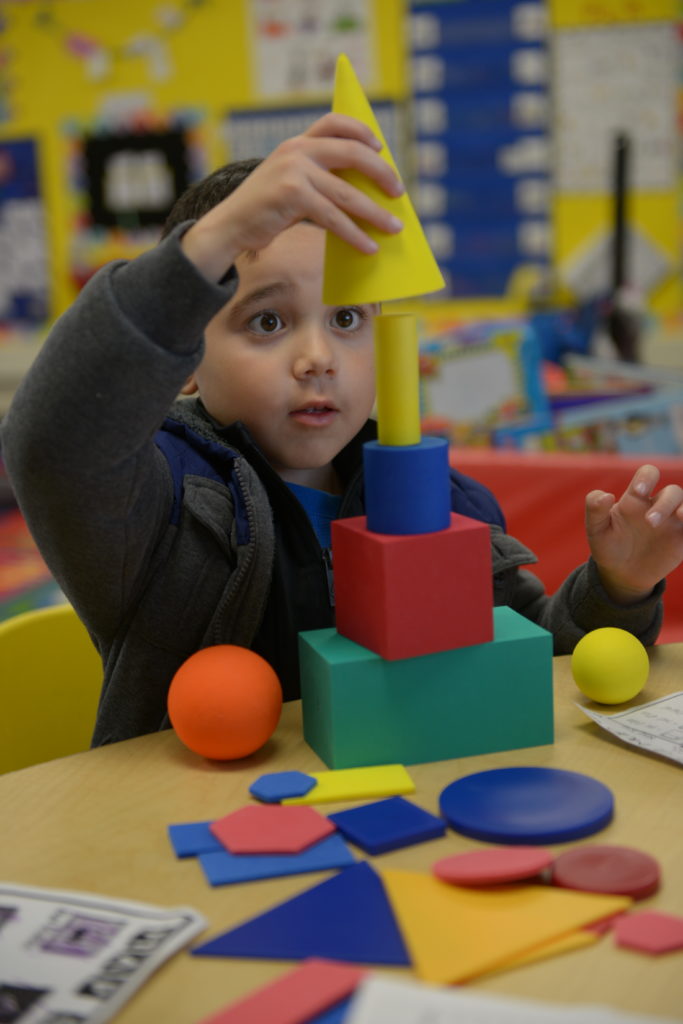
Expert Q&A: Preschool’s positive impacts
A Learning Policy Institute researcher and analyst weighs in
Transitional kindergarten builds skills and confidence
TK gives students foundational skills and confidence
TK improves student outcome
TK especially impacts students literacy and math skills
What educators want you to know
Insights from early childhood education teachers, specialists
Preschool Produces Positive Impacts
How substantial are the benefits of early childhood education (ECE)? We asked Beth Meloy, senior researcher and policy analyst at the Learning Policy Institute.
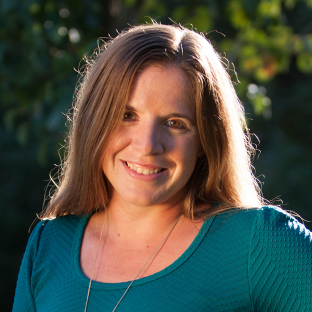
How can high-quality ECE* put children on the path to success in school and life?
Children who attend high-quality preschool programs experience substantial learning gains and are more prepared for school compared with children who do not. We frequently see positive impacts on children’s early literacy and mathematics skills, and in school engagement. Preschool can also have lasting effects far into children’s later years of school and life. For example, children who regularly attend high-quality preschool programs are less likely to be identified as having special needs or to be held back in elementary school than those who don’t attend.
How critical is ECE for vulnerable student populations?
As early as 9 months of age, the differences in learning experiences of children growing up in low-income households and children from more affluent homes can lead to a gap in their development. These early developmental gaps can continue to grow through elementary and secondary school unless they get access to high-quality learning opportunities, which have the potential to close the gap.
Why is ECE so important for learners as they grow and develop?
From birth to age 5, a child’s brain is far more flexible than at any other time in life. During this window of opportunity, being well cared for in nurturing and engaging settings that embed learning into everyday routines and play is essential to healthy development. Young children learn by exploring their environment, experimenting, using language to communicate what they observe, and working with other children and teachers to solve problems. Engaging in that way, purposefully, while supporting each and every child on their individual learning trajectory, is complex work. That’s why policies and funding that support early educator and school leader preparation, salaries, and professional development are so important.
Why should states invest in preschool?
The question is not whether preschool works but how to design and implement effective preschool programs that deliver on their promise. Estimates of the return on investment in preschool range from the modest (when followed into elementary school) — $2 for every $1 invested — to the substantial (when tracked through adulthood) — $17 for every $1 invested. Any return over $1 for every $1 spent means the preschool program pays for itself.
*Elements of high-quality ECE include standards and curricula that address the whole child, are developmentally appropriate, and are effectively implemented; well-prepared teachers who receive ongoing coaching and mentoring; and assessments that consider children’s academic, social-emotional and physical progress and contribute to instructional planning. See here for more.
Gov. Newsom’s Proposed ECE Budget
Universal preschool will soon become a reality in California, with Gov. Newsom proposing a $1.8 billion investment to provide all children with early learning resources and services. A breakdown of the proposal:
Newsom proposes increasing full-day, full-year access to the existing state preschool program for all low-income 4-year-olds, with a goal of 200,000 preschool slots by 2021-22. To extend preschool access to all California kids in three years, he proposes funding this year to develop a long-term plan, including strategies to address facility capacity, trained educators/ESPs, and revenue options.
“The governor’s commitment to universal kindergarten and preschool is how we give all kids an equal start,” says CTA President Eric Heins. “As educators, we know early childhood education gives kids the start they need and improves learning as they advance in school.”
See details at ebudget.ca.gov.
The Discussion 0 comments Post a Comment